New Jersey may not be at the top of the list for rockhounds, but it actually contains an incredible variety of gems and minerals for the keen-eyed collector. It’s just a matter of knowing what’s there and where to find it. From quartz to ruby to minerals like prehnite, there’s something here for every kind of rockhound.
So, let’s get down to it and we’re going to dig into a list of rocks, minerals, and gems found in the state of New Jersey.
1. Quartz/Amethyst/Citrine
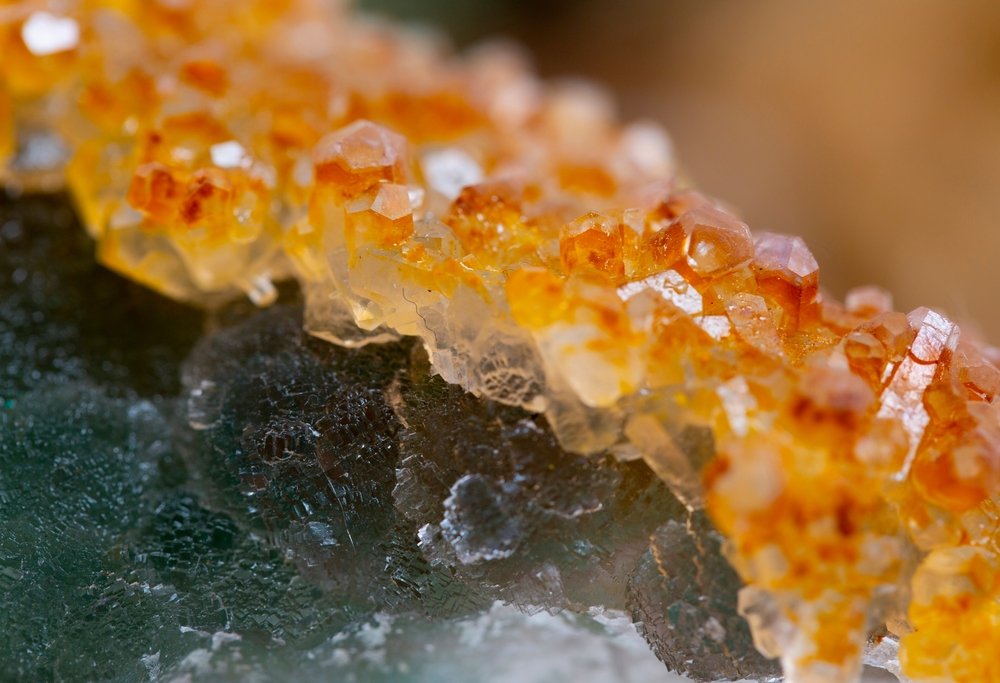
Quartz is the macrocrystalline form of silica, creating elongated points with a hexagonal structure. Amethyst and citrine are colored forms of quartz with almost identical chemical structures, both with iron trapped in the lattice. How hot these stones get during formation determines their color at the end of their formation, purple or yellow.
Citrine is much rarer than amethyst for the most part. Indeed, somewhere over 90% of the jewelry market’s citrine is usually heat-treated amethyst instead of “natural” citrine. The same is true for many specimens. It can be found in only a few places, and it turns out that New Jersey is one of them!
Both amethyst and citrine are found in the state. Amethyst is more common, with only a couple of locations known to have citrine in the area. It’s hard to understate just how rare the yellow form of quartz is without human heat treatment.
If you’re looking for citrine the spot you want to hit is Carnelian Creek. Amethyst and quartz, on the other hand, can be found in numerous locations across the state. The best samples seem to come from Passaic County, which is where I’d recommend you head if you’re looking to bring home some crystals.
2. Corundum (Ruby)
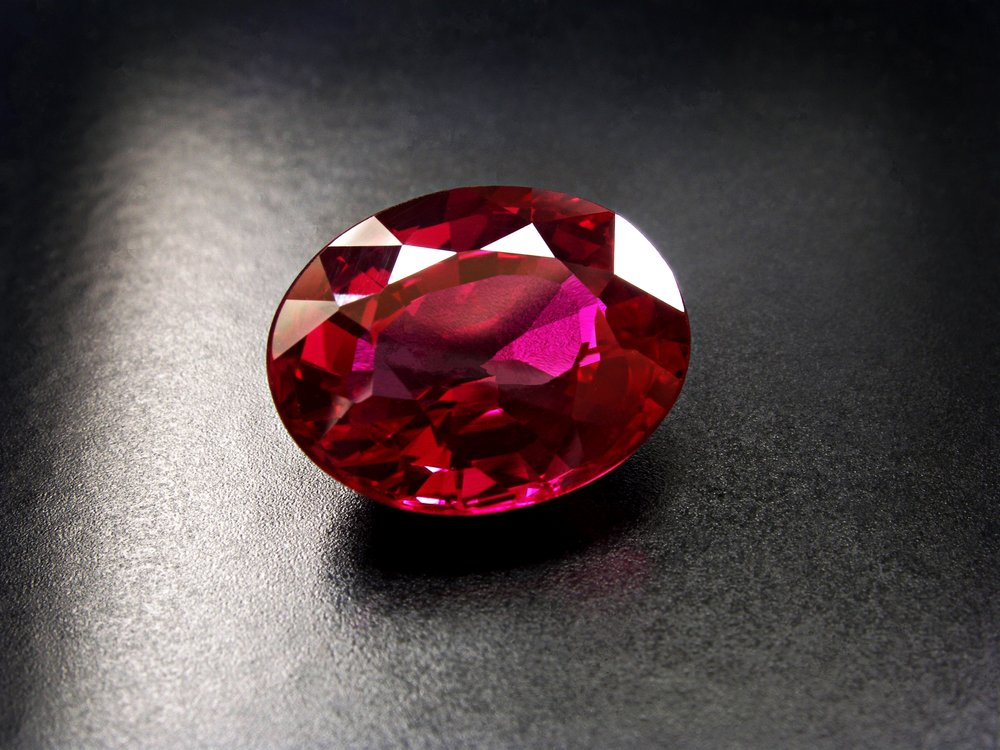
The corundum family of gemstones is rather important. The various forms of sapphire come in a myriad of colors, matched only by the insane range of color found in tourmaline. Red corundum is ruby, the deep scarlet color deserves a name of its own. Ruby and sapphire are two of classic precious gemstones, commanding high prices when found as gem-quality materials.
Ruby is the most common form of corundum found in New Jersey. It can be of surprising quality, although most of it is heavily included and not suitable for faceting. That’s not a bad thing by any means, ruby still bears its namesake color and crystals can make awesome display pieces for the home.
Other material is light blue in color, not quite deep enough to be called sapphire. Corundum is a hard gemstone, which makes pulling it out of hard rock formations a little less tricky than more fragile stones. Indeed, the only “common” material that beats out corundum’s hardness is diamond. They’re even significantly harder than beryl varieties like an emerald.
The corundum in New Jersey is concentrated in the region around Sparta, New Jersey. The pits, mines, and quarries in the area bear many interesting stones, and corundum varieties are among them. Be sure to make sure you’re legal, but the Franklin Mining District in that area produces some great samples of the material.
3. Carnelian
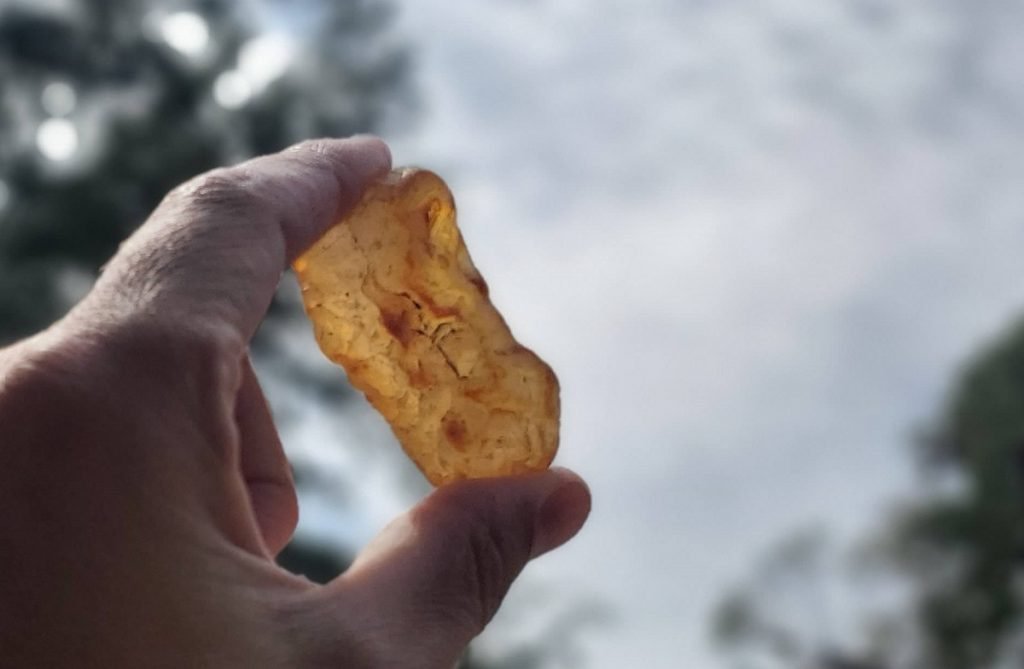
Carnelian is a strange one. It’s actually a red form of chalcedony, often banded, but it’s considered distinct from chalcedony and agate by many collectors. Carnelian is a muddy orange to bright red stone. Darker and yellower varieties are often called sard, but there isn’t an actual point of distinction between the two materials. Like some of the weirder jaspers/agates it’s usually a personal call.
Carnelian has a long history of human usage. Its bright, solid color is often cut into cabochons to show off the polish. Banded varieties can also be cut to show the banding, allowing the stone to show off more of its natural beauty. It’s commonly seen in jewelry from… pretty much everywhere. Ancient Egyptian artifacts through Southwestern Navajo jewelry all use it to some extent.
Carnelian from New Jersey tends to be solid colored with an orange dominant tone. Often it will also show great transparency even before polishing. Many of the samples found are botryoidal, formed of small spheres that are interlocked. Nodules like this found before they’ve been fully tumbled in the river are prized.
Carnelian can be found in Stirling Brook, which is also known as Carnelian Creek due to the stone’s presence there. It’s a common find in the creek, you just need to keep a eye out.
4. Amber
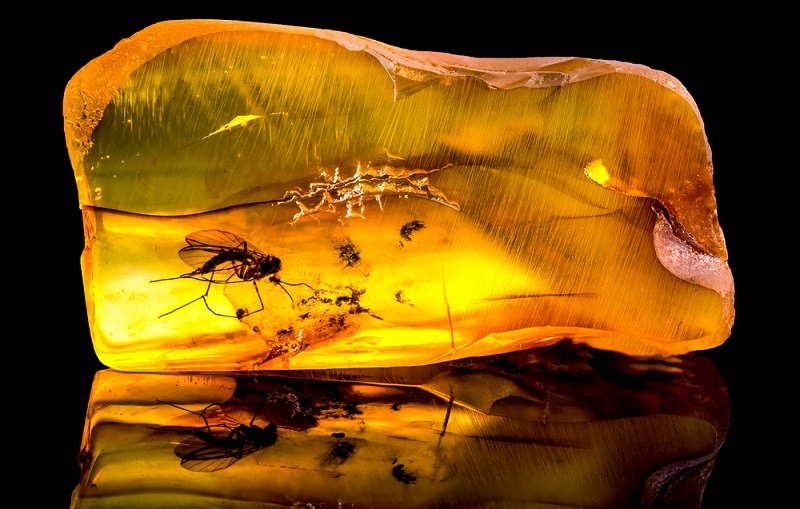
Amber isn’t quite a stone, but it’s a beautiful material and comes from the Earth in this region. While Baltic Amber often washes up on the shore, you’ll have to get your hands dirty to find it here. The amber from New Jersey has helped identify dozens of arthropods and even a species of fungus. This amber tends to be UV-reactive, causing a permanent darkening if sunlight hits it over time, making it one of the less stable varieties.
This is true amber, as opposed to copal. The difference is pretty simple: copal is a proto-amber mass of tree sap with the volatile components evaporated. It has yet to undergo the polymerization process, however, which makes it a bit less sturdy than normal amber.
Amber is a strange material. If you’ve ever held a piece you’ll note it looks like a stone but it doesn’t feel like one. The closest thing I can think of to amber is plastic, which is a bit disconcerting in a valuable stone. It’s easy to tell if amber is fake, you can use the smell, a heat test, or a scratch test. Amber should scratch very easily, but fakes made from glass won’t.
Your best bet is to look around Middlesex County. You’re looking for clay pits in this case, as the amber of New Jersey is usually found locked within them. Naturally, erosion also means there will be some in the waterways in the region as well.
5. Opal
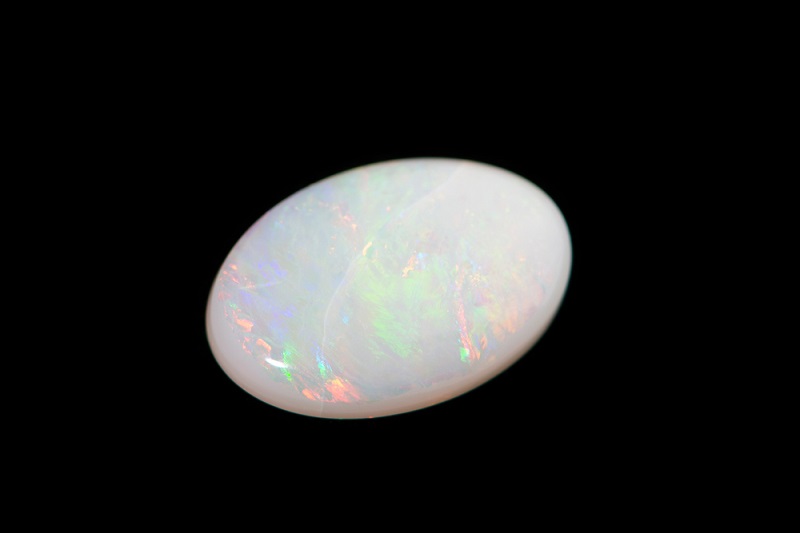
Opal is a common find across the planet. If you’re wondering why it’s so expensive… well, there’s an easy answer: the opal that most of us think of is actually “precious opal.” The more common variety shows up as a hydrated silica mineral, often with very little color. You’ll sometimes see this material referred to as “potch” although the term isn’t used much outside of opal mining circles.
Opal lacks an internal structure despite being made of silica. It’s comprised of microscopic spheres of silica pressed together, creating a sort of glass instead of a crystalline mineral. Opal has a high water content compared to chalcedony and quartz as well, which is one of the things that makes it softer than those minerals.
The opal from New Jersey is of the common variety. I haven’t seen any reports of precious opal being found in the state, although it may exist in minute quantities. It often takes a botryoidal form, but it also shows up in waterways as rounded pebbles. The distinctive way opal breaks is a good way to find pieces that have recently entered.
Opal in New Jersey is usually found in quarries and pits on the eastern side of the state near New York. Railroad cuts in this area, particularly near the border, are a good place to take a look as opal is a common find in the exposed bedrock.
6. Datolite
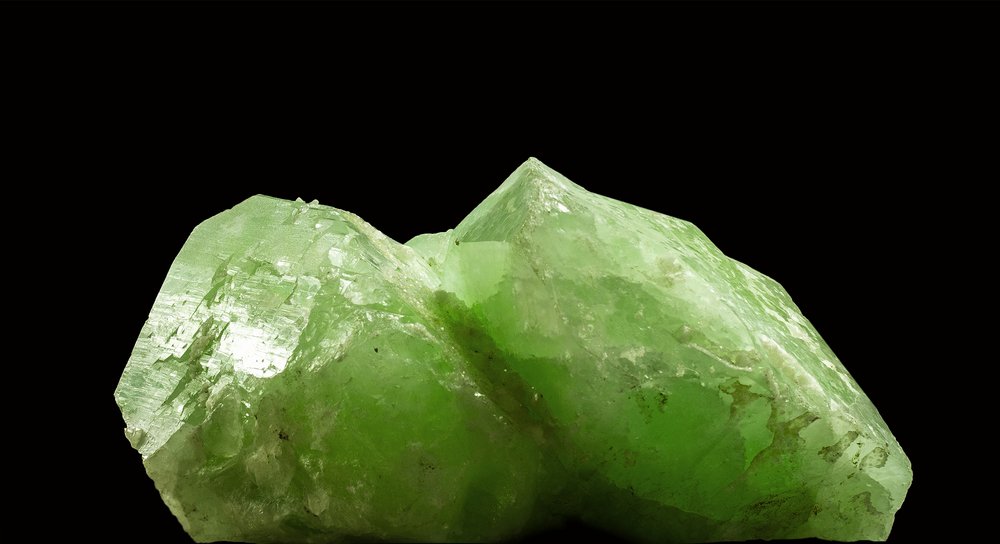
Datolite is a strange mineral, a calcium boron hydroxide neosilicate. This means that it’s a silica-based stone that contains boron and calcium as well. It’s a common find around copper deposits and its presence usually indicates that there’s more to find in the area. It’s a relatively common mineral specimen since it has no current use in industry.
Datolite occurs in two forms. The first is a prismatic monoclinic crystal system which is usually white or very light green in appearance. It also occurs in a massive form, comprised of interlocking crystal growth that creates the impression of a single stone. Nodules in this form sometimes have color on the interior.
It’s usually in crystalline form when found in this state. The colored nodules of massive datolite appear to be unique to the Lake Superior region. The best part about finding datolite in the wild is that it means other great minerals are nearby as well. Nothing against datolite either, as it can also make a great, unique specimen.
If you’re looking to find some, I’d suggest checking roadcuts and railroad cuts in Passaic County. You may also be able to get legal access to mine tailings or quarries, which are another good option for finding your own mineral specimens.
7. Prehnite
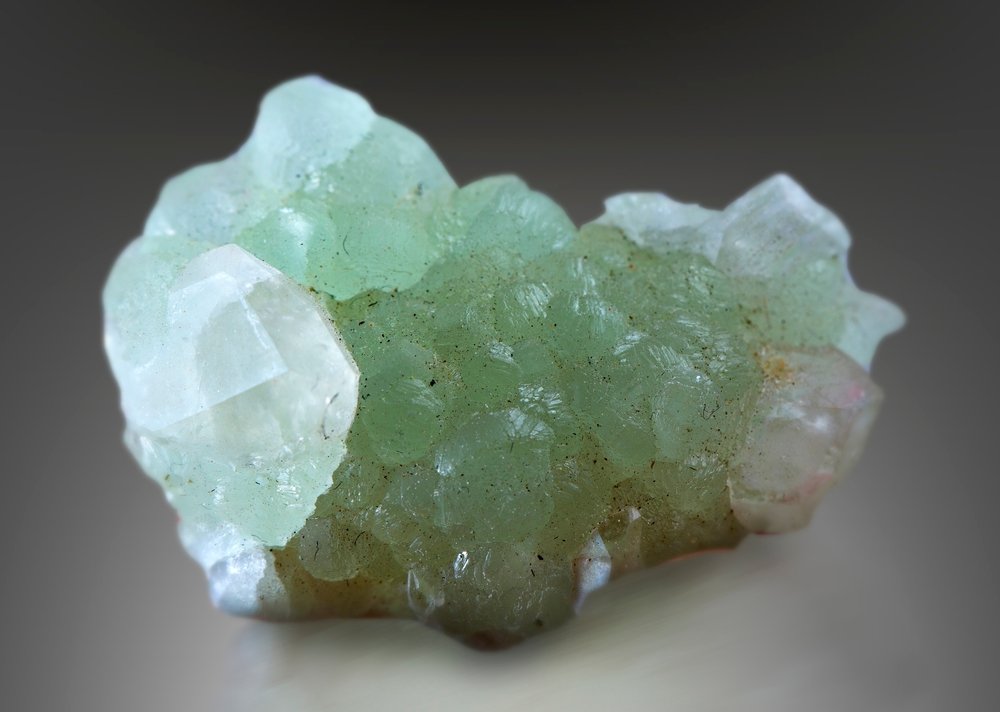
Prehnite is a light green crystal formation that occurs with an orthorhombic system. It’s comprised of silica, calcium, aluminum, and some oxygen. The resulting crystals can be quite beautiful, and prehnite is often associated with other interesting minerals as well.
Prehnite is the unofficial state gem of New Jersey. It’s easy to see why when you’ve held a great sample, in addition to the beautiful color it’s also hard enough to hold up in things like pendants. It’s sometimes cut as a faceted gem, creating a lovely light green stone that looks similar to peridot.
Prehnite often occurs in a botryoidal form, and this is the form most commonly found in New Jersey. These aggregate crystals are comprised of several small spheres bonded together during crystallization. You may also find nodules of the material.
Prehnite can be found in the same locations as Datolite. The best samples of the material all seem to emerge from Passaic County, where roadcuts and quarries are your best bet.
8. Agate/Jasper/Chalcedony
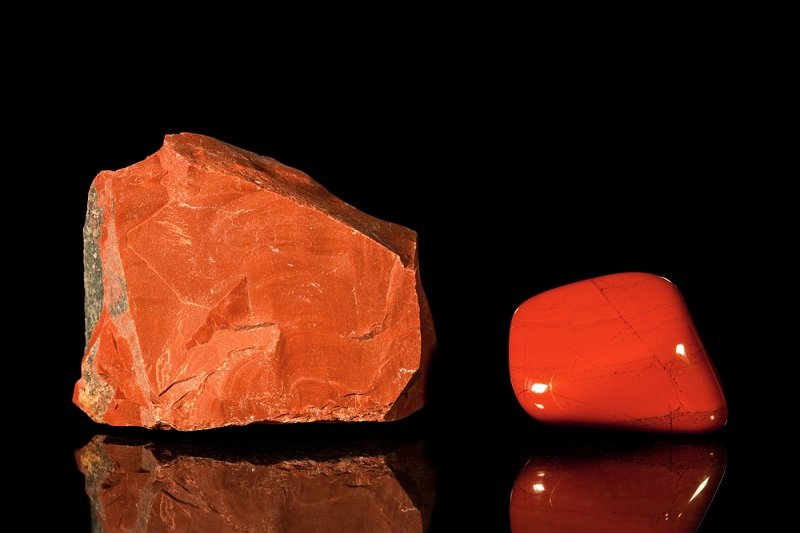
Agate is a rarity in this region, but New Jersey has some great samples that can be found. Agate is a banded or heavily included form of chalcedony, while jasper is opaque. Chalcedony by itself is often used as a term for blue chalcedony, but the name also stands for any sort of single color chalcedony examples such as carnelian or chrome chalcedony.
People will debate endlessly about what classification an individual stone falls under, so I lump them together. Various forms of all three are found in New Jersey, and primarily in the same locations. This makes it much easier for the would-be rock hunter.
In particular, New Jersey has some great agates. There are also some jasper variants that look great, and many samples of the more common red jasper can also be found in waterways in the region. Chalcedony primarily appears as carnelian but on occasion, other colors may be found.
These stones are spread through Passaic County, in the waterways and quarries that are around the region. Looking there is your best bet to bring home something awesome.
9. Serpentine
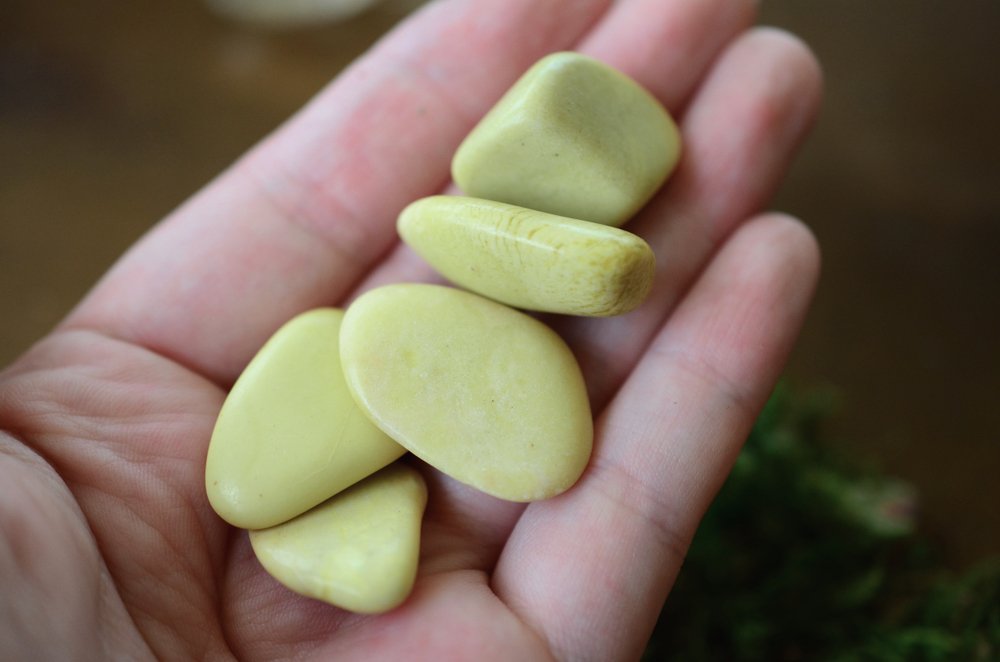
Serpentine is actually a part of the subgroup of serpentine minerals. These minerals all have the same rough chemical makeup but occur with different crystal lattices. These different forms are called polymorphs. Together they become serpentinite, which is usually simply called serpentine to save a syllable.
Serpentine gets a bad rap in some circles for the simple fact that one of the minerals in the group is chrysotile. You may recognize chrysotile as the main source of asbestos fibers, a fire-resistant material primarily known these days for causing mesothelioma. While dangerous to us, it’s not toxic in the classical sense.
Instead, asbestos causes mechanical damage when inhaled, which can cumulatively cause serious problems. The same is true of silica, however, and the end results are much the same. There’s a reason I talk so much about PPE and wet work when discussing lapidary tools. On its surface, asbestos is no more dangerous than silica dust, which means… that it’s really dangerous. So mask up, but you should be doing that when working with any stone.
The best serpentine examples in the state come from Lake Valhalla, where gem-grade serpentine can be found. It can also be found in metamorphic outcroppings in the Eastern portion of the state.
- Online rock and mineral club for collectors of all levels!
- Find community with like-minded rock and mineral enthusiasts.
- Monthly Giveaways!
- Free Access to Entire Digital Library of Products (annual memberships)


